Health Science | National Healthcareer Association (NHA)
How to Use HealthCenter21 in a Pharmacy Technician Course
Betty Jean is detail-oriented and pays attention to how the smallest details can affect the big picture. Her passion is to provide error-free curriculum to our teachers so they can spend time pursuing their own passions.
As a CTE health science teacher, you probably teach a variety of classes, ranging from health science foundations to certification-focused courses.
While introductory healthcare classes have many options available, it’s more challenging to find age-appropriate resources for courses focused on specific careers, like pharmacy technician.
Because of this, teachers often ask how our digital curriculum, HealthCenter21, can be used in a pharmacy technician class to help prepare students for the NHA CPhT exam.
While HealthCenter21 isn’t a full pharmacy technician curriculum, many teachers use it as a supplement to teach foundational skills and concepts.
In this article, you’ll discover which HealthCenter21 learning modules we recommend you use as a supplement for pharmacy technician classes.
You’ll also have the opportunity to download a certification success guide to see precisely how HealthCenter21 aligns with the NHA CPhT exam.
Before getting into the details, it’s essential to understand how HealthCenter21 is structured and how you can implement modules as part of your teaching strategy.
How Is the HealthCenter21 Curriculum Structured?
HealthCenter21 is a digital curriculum with more than 1,000 curriculum hours of content organized into learning modules.
Each module focuses on an overarching healthcare topic and presents information according to our four-phase curriculum framework.
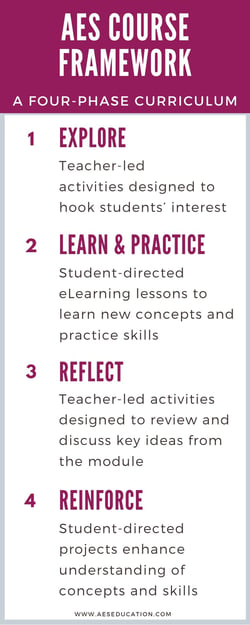 The four phases of the HealthCenter21 curriculum are:
The four phases of the HealthCenter21 curriculum are:
- Explore
- Learn & Practice
- Reflect
- Reinforce
The Explore Phase includes teacher-led activities designed to hook your students’ interest. These activities help get your students thinking and prime them for learning new concepts and skills in the later phases of the module.
The Learn & Practice Phase has teacher resources and student-directed eLearning lessons to help students learn new concepts and skills. This phase is where the bulk of student learning occurs and where you’ll find most of the curriculum coverage.
The Reflect Phase includes teacher-led activities designed to review and discuss key ideas from the eLearning lessons. This phase helps students connect concepts they just learned to their existing knowledge and experience. The activities help your students form long-lasting information retention.
The Reinforce Phase is made of student-directed projects to enhance the understanding of concepts and skills further. During this phase, students work independently or in groups to complete projects that require the application of the concepts learned from the module.
Overall, this four-phase learning plan maximizes your students’ understanding of the concepts and skills within each module.
But what’s the best way to leverage the four phases when using the modules as a supplement to your pharmacy technician curriculum?
How to Implement HealthCenter21 Modules in a Pharmacy Technician Class
The best implementation for your pharmacy technician class will depend on your unique curriculum and students’ needs.
Based on conversations with teachers like you, they tell us that using a combination of seven strategies works best:
- Introduce key concepts with teacher presentations
- Assign Learn & Practice lessons as classwork
- Rotate groups between digital and hands-on work
- Assign Learn & Practice lessons as homework
- Present the Learn & Practice lessons to the class
- Assign reflection questions as homework
- Assign current event reports as homework
To learn how teachers like you implement these strategies, read this article: The AES Course Framework: A Four-Phase Curriculum.
Now that you understand the four-phase curriculum and how you can leverage it let’s dive into which HealthCenter21 modules you should use in your pharmacy technician curriculum.
Which Curriculum Modules Should You Use in a Pharmacy Technician Class?
The HealthCenter21 modules recommended for teaching a pharmacy technician curriculum are:
- Anatomy and Physiology
- Emergency Care
- Health Information Technology
- Infection Control
- Insurance and Coding
- Legal and Ethical Responsibilities
- Medical Assistant Pharmacology
- Medical Office Assistant
- Medical Records
- Medical Terminology
- Physical Exams
- Safety Precautions
- Special Populations
- The Health Assistant
- Wellness and Nutrition
This list includes the modules that will help your students learn the foundational knowledge and skills on the NHA CPhT exam.
The order of these modules is not a recommended teaching sequence. Instead, these recommendations are a starting point to help you develop your syllabus and teaching plan when using HealthCenter21.
In some cases, your students may have worked through one or more of these modules in introductory health science courses. If that’s the case, you may decide only to use those modules as a refresher for your class.
Additionally, you may want to include other modules in your classes to provide further health science information to your students.
With that, let’s dive into what each module consists of and how they relate to teaching pharmacy technician classes.
1. Anatomy and Physiology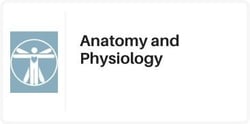
The Anatomy and Physiology module provides an overview of the 12 human body systems and how they work together.
Students learn about structure, functions, diseases, disorders, homeostasis, and immunity.
2. Emergency Care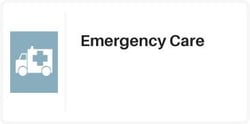
The Emergency Care module provides an overview of emergency care as students learn to assess emergency situations.
They also learn to react appropriately to bone and joint injuries, shock, open wounds, severe burns, foreign bodies, poisoning, heart attacks, strokes, diabetic reactions, seizures, convulsions, and heat and cold-related illnesses.
3. Health Information Technology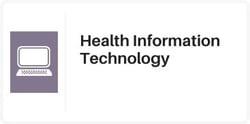
The Health Information Technology module provides an introduction to information technology and its effect on the healthcare industry.
They learn terminology, gain exposure to an EHR system, and understand the importance of following HIPAA guidelines.
4. Infection Control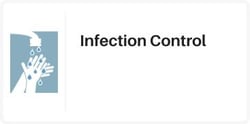
The Infection Control module provides an overview of the importance of protecting oneself and others from disease-causing microorganisms.
Students learn about microorganisms, asepsis, hand washing, basic equipment cleaning, autoclaving, personal protective equipment, sterile technique, and transmission-based precautions.
5. Insurance and Coding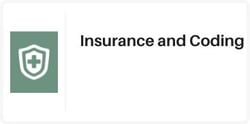
The Insurance and Coding module provides an overview of insurance concepts and government-funded health insurance programs.
Students also explore and practice coding and filing medical insurance claims.
6. Legal and Ethical Responsibilities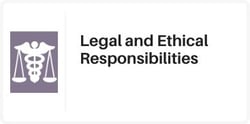
The Legal and Ethical Responsibilities module provides students with the knowledge to make sound decisions when faced with workplace situations involving The Patient's Bill of Rights, Scope of Practice, tort law, contract law, confidentiality, privileged communication, and ethics.
7. Medical Assistant Pharmacology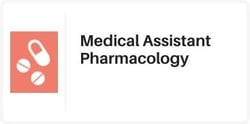
The Medical Assistant Pharmacology module provides an overview of the regulations and guidelines for drug prescription, administration, storage, and disposal.
Students calculate and prepare medication dosages and learn to administer medications, including injections.
8. Medical Office Assistant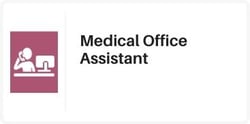
The Medical Office Assistant module gives students an overview of the role and responsibilities of medical office occupations.
Topics include educational requirements, professionalism, personal appearance, teamwork, effective communication, HIPAA, and the legal issues that pertain to office personnel.
9. Medical Records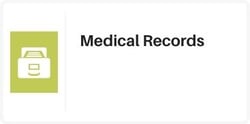
The Medical Records module provides an overview of medical record activities, including preparation, maintenance, handling, and storage.
Students also examine record control policies and procedures and purging and long-term storage of files.
10. Medical Terminology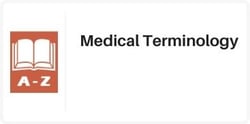
The Medical Terminology module introduces healthcare workers’ language, including root words, suffixes, prefixes, abbreviations, and body planes, directions, and cavities.
Students learn to add prefixes and suffixes, form phrases with abbreviations, and interpret medical terms.
11. Physical Exams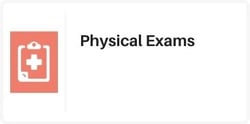
The Physical Exams module provides an overview of the medical assistant's role in EENT, CPE, pediatric, GYN, and OB patient examinations.
Students learn about the equipment, positions, and draping methods for each procedure and how to educate and prepare patients and assist physicians.
12. Safety Precautions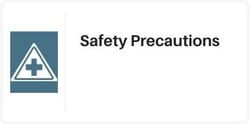
The Safety Precautions module provides an overview of safety techniques and the steps for greeting and identifying patients in a health care facility.
Students use the Internet to research safety regulations from OSHA, the FDA, and the EPA and demonstrate how to report safety violations by filing an event report.
13. Special Populations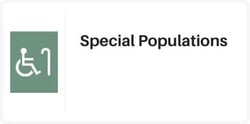
The Special Populations module provides an overview of caring for unique patient population groups, identify illnesses and disorders common to these groups, and discover ways to adapt care and establish positive relationships with patients.
Students also learn patient restraints procedures and alternatives.
14. The Health Assistant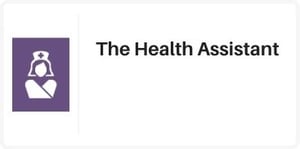
The Health Assistant module provides an overview of health assistant occupations’ roles and responsibilities.
These include employment opportunities, educational requirements, professionalism, scope of practice, confidentiality, consent, ethics, and safety and standard precautions.
15. Wellness and Nutrition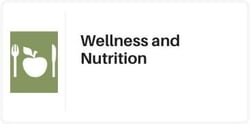
The Wellness and Nutrition module provides an overview of the importance of wellness and nutrition as students learn about choosing health care providers, medications, physical examinations, and creating a practical wellness plan.
Teach Pharmacy Technician Basics with HealthCenter21
Overall, these 15 modules are our best recommendations for using HealthCenter21 as a supplemental resource to teach pharmacy technician classes and prepare students for the NHA CPhT exam.
By incorporating HealthCenter21 with other pharmacy technician lessons and activities, you’ll provide your students with a great blended learning experience.
For more detailed information on how you can use HealthCenter21 as a supplement and which CPhT exam topics it doesn’t cover, download your free guide:


